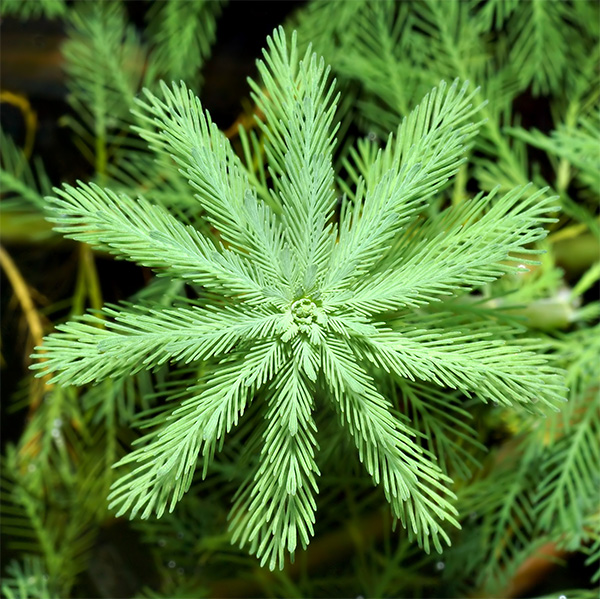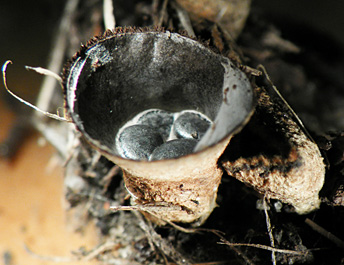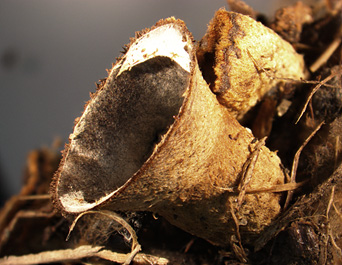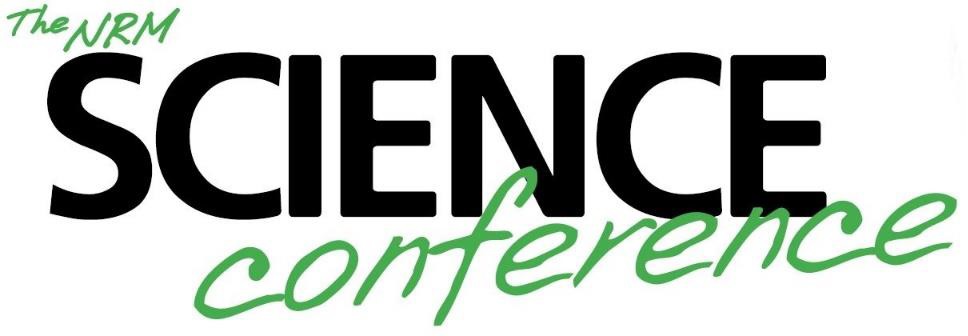The highly invasive water weed Myriophyllum aquaticum (Vell.) Verdc. (Parrot feather; plant family Haloragaceae) has been found growing wild in a drainage/creek line in Nairne by State Herbarium weeds botanist Chris Brodie. The small population covering an area of 2 × 2 m was discovered growing in shallow flowing water, rooted in soft silt.
Originally from South America, the species was introduced to Australia as an ornamental for aquariums and ponds, due its attractive, luxuriant growth of blue-green stems and leaves. Parrot feather grows partially submerged, with the roots, lower stem and some leaves underwater, but the top of the plant emerging above the water surface.
In cultivation M. aquaticum soon becomes dominant. The plant grows quickly and produces creeping, thickened roots (rhizomes), which produce more stems. Excessive plant material then needs to be removed and is sometimes discarded illegally on roadsides or in creeklines.
Freshly discarded plants can re-grow from a single root or stem fragments in shallow water. This aggressive growth can strongly reduce light levels and water flows, trap sediments, crowd out native vegetation and even obstruct waterways for recreational use by restricting or preventing access to the water or impeding boat passage.
Parrot feather produces male and female flowers on separate plants. So far, only female plants have been found in Australia, and therefore seeds are not produced, i.e. the plants spreads only by vegetative means. If male plants were introduced into Australia, this species could become more prolific.
It is likely that the population at Nairne is a result of dumped plant material. It is of concern because of the potential to spread. Plants are easily damaged, resulting in stem fragments breaking off and establishing in new locations downstream. With the recent and future winter rains in the Adelaide Hills, further dispersal is highly likely because of higher water levels in creeks and increased flows. The population has been reported by the State Herbarium to Biosecurity SA, who informed local NRM agencies.
Myriophyllum aquaticum has recently been suggested by Biosecurity SA to be a problem plant species (500KB PDF factsheet) and was recommended for Declaration under the Natural Resources Management Act 2004. In other States (e.g. Western Australia, Tasmania) and other countries (e.g. parts of the U.S.A., South Africa), the plant is already a declared weed. A public consultation process is currently underway and public feedback is welcomed on the South Australian Government website YourSAy.









You must be logged in to post a comment.